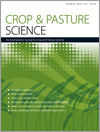Perennial grasses have production and environmental benefits in areas of southern Australia typified by the mixed farming zone of southern New South Wales (NSW). The perennial grass phalaris (Phalaris aquatica L.) is widely used in southern Australia; however, it would find more use in the mixed farming zone if its persistence in marginal rainfall areas (450–500 mm average annual rainfall) were improved. We evaluated a range of germplasm (n = 29) including wild accessions, lines bred from these, and existing cultivars for persistence and production at three sites in a summer-dry area of southern NSW with 430–460-mm average annual rainfall. Two sites were used over 4 years and the third site over 5 years. Summer dormancy, maturity time and seedling growth were also assessed. Analysis of genotype × environment interaction employing factor analytic models and accounting for spatial and temporal correlations indicated that changes in persistence occurred mainly over time rather than between sites. Ranking changes occurred in the dry establishment phase of the experiment and during a severe final summer drought, with few changes occurring in the intervening high-rainfall years. Lines that survived the establishment phase best had vigorous seedlings and earlier maturity, whereas those surviving the final summer best were earlier maturing and higher in summer dormancy with high winter-growth activity. Some later maturing lines within the higher summer dormancy group were less persistent. Some accessions from North Africa were the most persistent; also, populations bred from these and other more persistent accessions generally persisted and produced better than cultivars used presently. However, present cultivars were capable of high yield in the higher rainfall years. We suggest that persistence of higher summer dormancy cultivars over very dry years could be improved by selecting for earlier maturity time.
How to translate text using browser tools
27 September 2017
Persistence and productivity of phalaris (Phalaris aquatica) germplasm in dry marginal rainfall environments of south-eastern Australia
R. A. Culvenor,
M. R. Norton,
J. De Faveri
ACCESS THE FULL ARTICLE

Crop and Pasture Science
Vol. 68 • No. 8
October 2017
Vol. 68 • No. 8
October 2017
drought tolerance
G × E Interaction
multi-environment trial (MET)




